A temple rising majestically along the Chao Phraya River, embodying the brilliance of Thai craftsmanship and spiritual devotion.
Curious about Wat Arun, the Temple of Dawn? It’s more than just an architectural marvel; it’s a beacon of Thai culture and spiritual life. Imagine a radiant temple shimmering at sunrise, blending historical grandeur with deep religious significance.


Open daily from 8:00 AM to 6:00 PM
Modest attire is required; shoulders and knees should be covered. The temple does have modest garments available to rent.
Early morning or late afternoon to experience the temple’s beauty in the soft light of dawn or sunset.
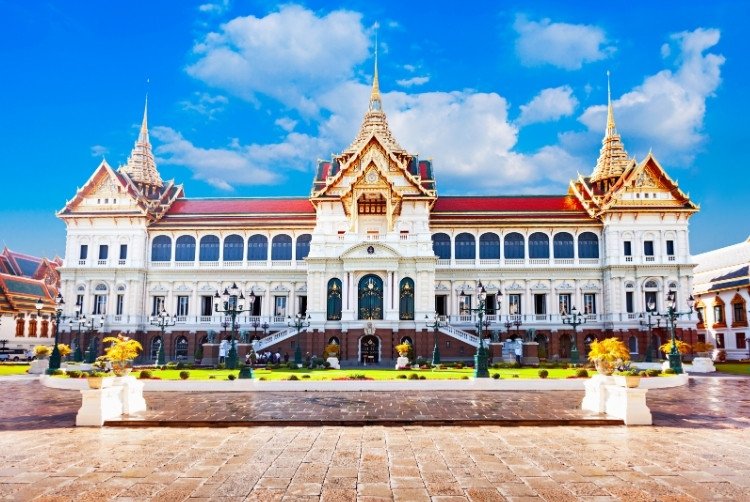
A short ferry ride away, this iconic site houses the revered Emerald Buddha and showcases stunning Thai artistry.
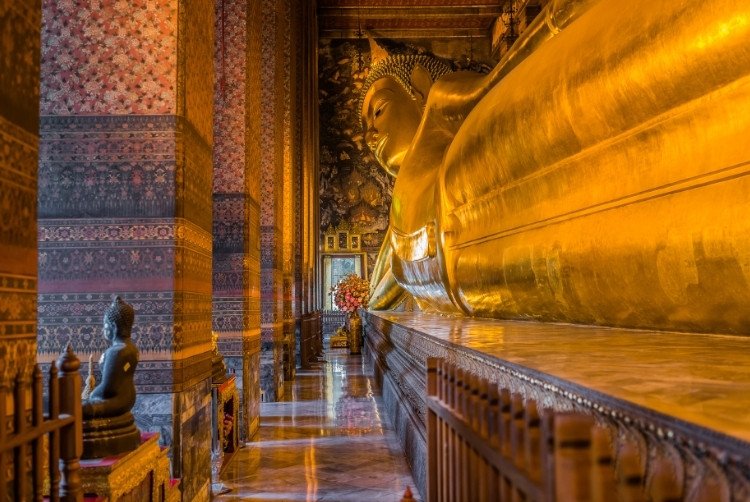
Home to the giant Reclining Buddha, Wat Pho is a nearby sanctuary offering a tranquil escape with traditional Thai massage services.
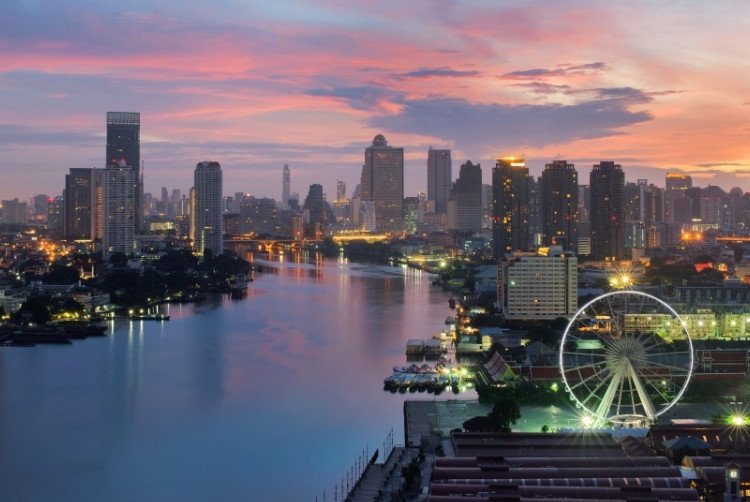
A vibrant open-air mall along the river, combining shopping, dining, and entertainment with a touch of history.
269 Feet Tall
Ornamented with Seashells and Porcelain
Dedicated to the Hindu God Aruna

A Royal Temple of the Chakri Dynasty
Structure Restored Under Rule of King Rama II
Famous for its Nighttime Illumination





In the early 19th century, Wat Arun was in a state of disrepair, a shadow of its former glory. It was King Rama II who recognized the temple’s profound spiritual and cultural significance and initiated a major restoration. This effort wasn’t just about bricks and mortar—it was a revival of the Thai identity, with the temple symbolizing the nation's resilience and dedication to preserving its heritage. The restoration work continued under King Rama III, who added the iconic prang (tower) that defines the temple’s silhouette today, making Wat Arun a beacon of Thai craftsmanship and devotion.
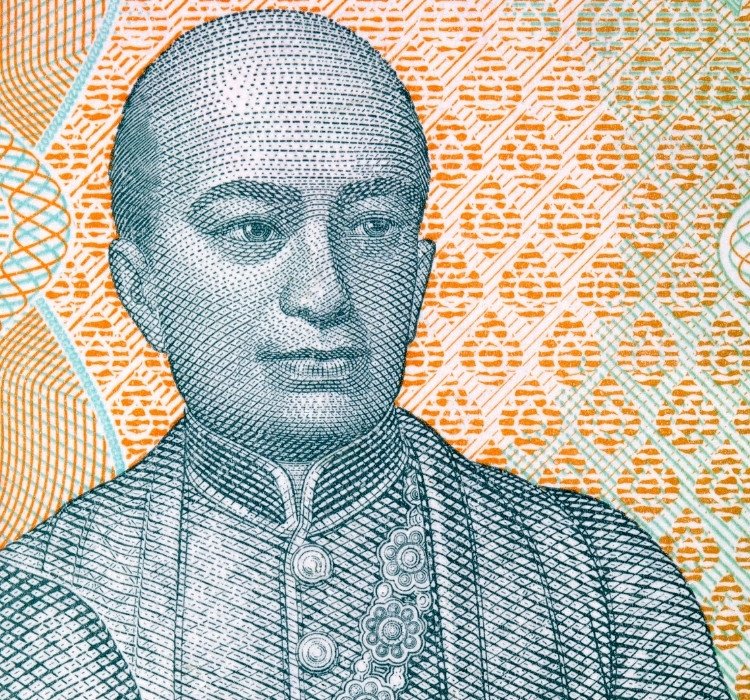
Wat Arun’s central prang, standing at 269 feet tall, is more than just an architectural marvel—it’s a symbolic representation of Mount Meru, the center of the universe in Hindu and Buddhist cosmology. Adorned with intricate designs made from porcelain and seashells, the prang gleams in the sunlight, reflecting the temple’s role as a spiritual guide. Each layer of the prang represents different realms of existence, with the topmost tier symbolizing the divine abode. This structure serves as a visual metaphor for the Buddhist path to enlightenment, guiding devotees from the earthly realm towards spiritual awakening.
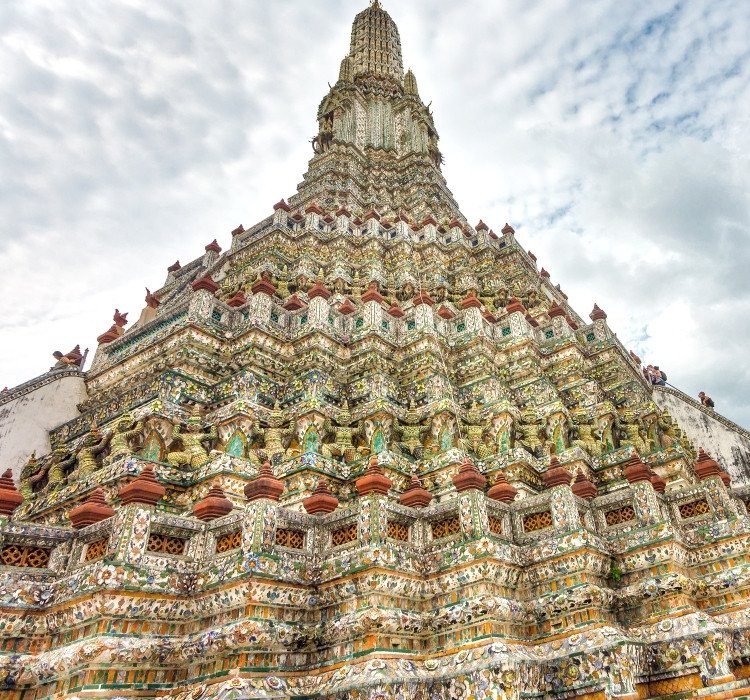
Wat Arun plays a central role in the Royal Barge Procession, one of Thailand’s most revered and ancient traditions. This ceremonial event, held on the Chao Phraya River, sees the King of Thailand and his entourage travel in a flotilla of ornately decorated barges. As the procession reaches Wat Arun, the temple stands as a spiritual sentinel, blessing the passing barges and symbolizing the harmonious relationship between the monarchy, the people, and the divine. This tradition, which dates back centuries, highlights Wat Arun’s enduring role as a guardian of Thai cultural and spiritual heritage.
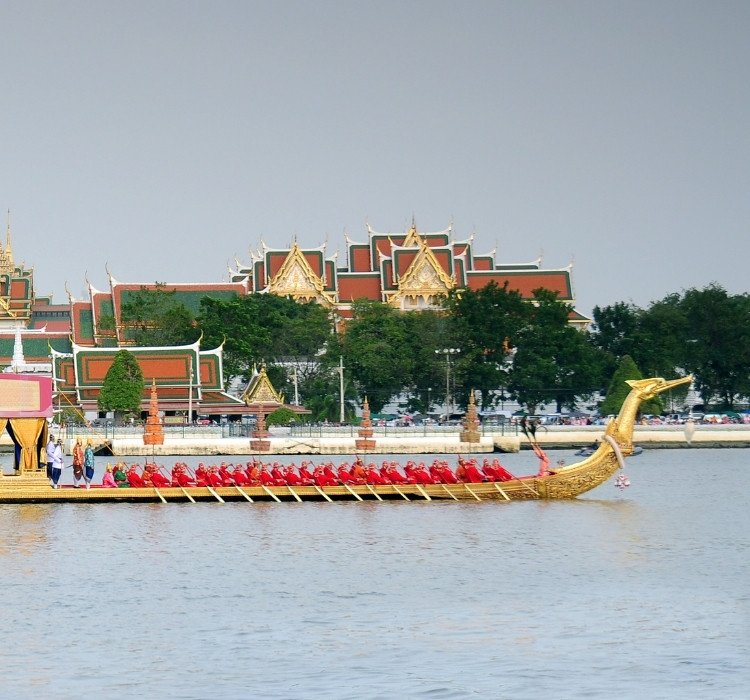
Wat Arun is best experienced at dawn, when the first light of day touches its intricate spires, creating a breathtaking spectacle. This daily event is not just a visual treat but also a spiritual moment, symbolizing the dispelling of darkness and the awakening of the soul. For many visitors, witnessing this serene transformation becomes a personal journey of reflection and renewal, with the temple serving as a sanctuary where the day begins with hope and spiritual clarity.
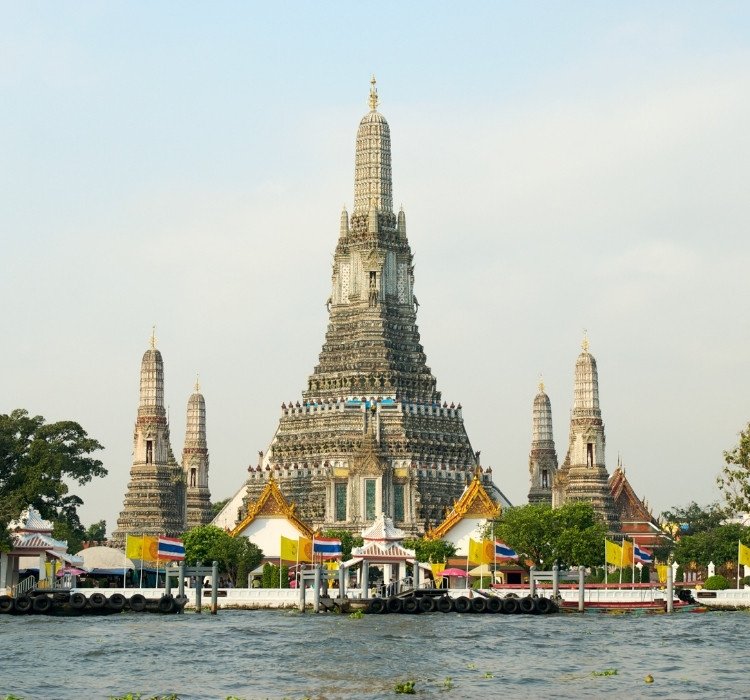
Wat Arun’s central prang does more than just symbolize the ascension to enlightenment—you can also ascend it physically. A steep staircase leads intrepid visitors up the central prang, where they are treated to breathtaking views of Bangkok and can take a close-up look at the intricate mosaics that decorate the prang. The arduous climb culminating in a stunning perspective of the surrounding city embodies the Buddhist journey towards enlightenment.
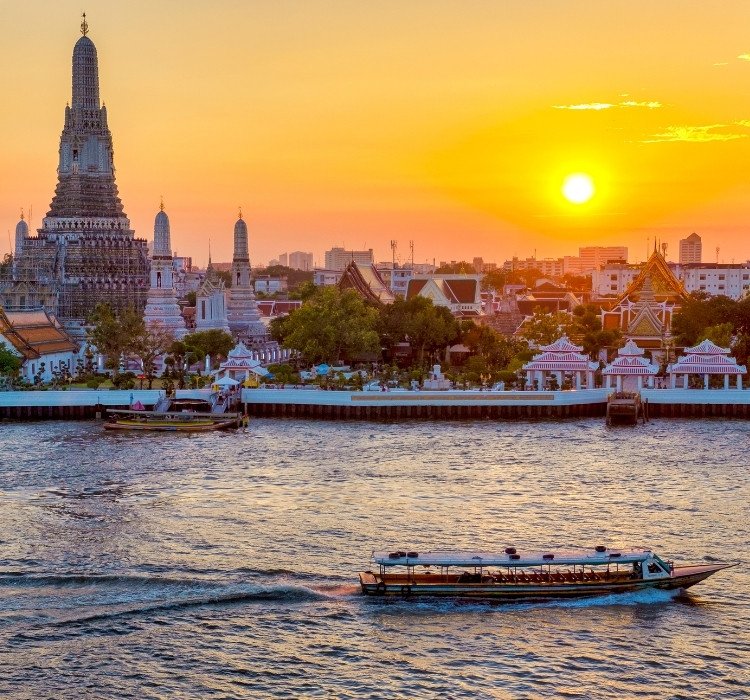
Wat Arun has seen numerous transformations, both in its physical structure and its spiritual role. Originally a temple in the Ayutthaya period, it was a simple shrine dedicated to the Hindu god Aruna, the deity of dawn. Over the centuries, it evolved into the grand Buddhist temple we see today, symbolizing the Thai belief in renewal and continuous spiritual growth. This evolution from a small shrine to a towering sanctuary mirrors the journey of the soul, constantly evolving and reaching towards the divine.
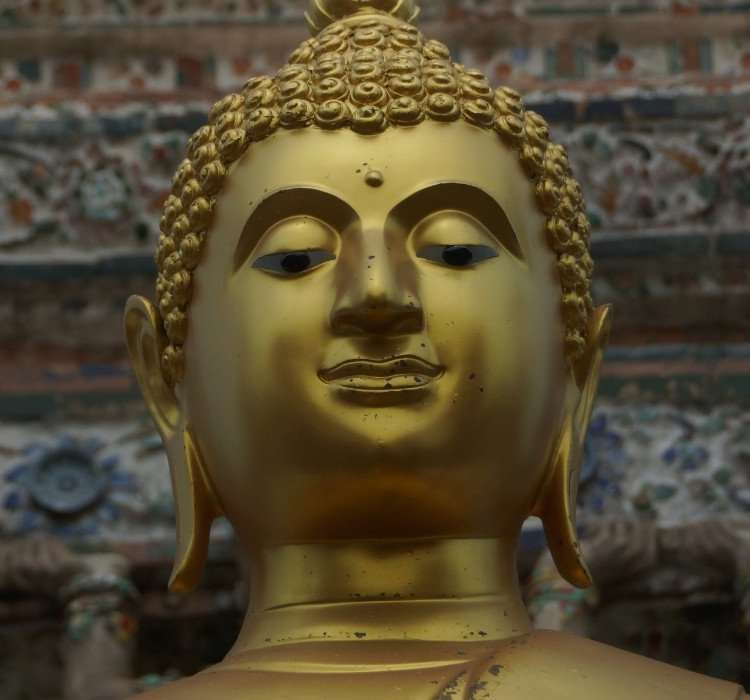
Wat Arun’s origins trace back to the Ayutthaya period, when it was a modest temple known as Wat Makok, situated on the banks of the Chao Phraya River. At this time, it held little historical significance.
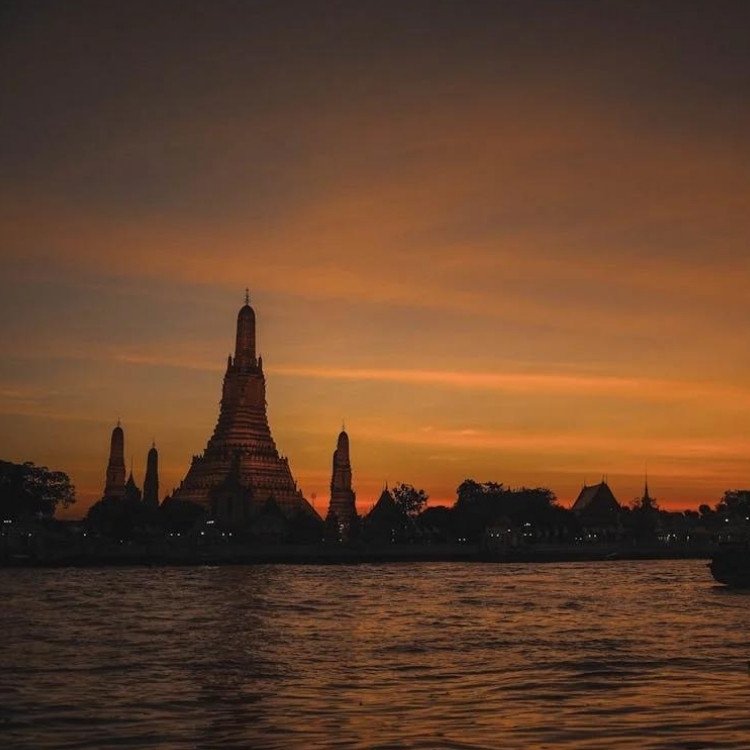
After the fall of Ayutthaya, King Taksin the Great established the new capital in Thonburi. Arriving at dawn, he encountered Wat Makok and renamed it Wat Chaeng (Temple of Dawn). This temple became a significant royal sanctuary and temporarily housed the sacred Emerald Buddha before it was relocated to Wat Phra Kaew.
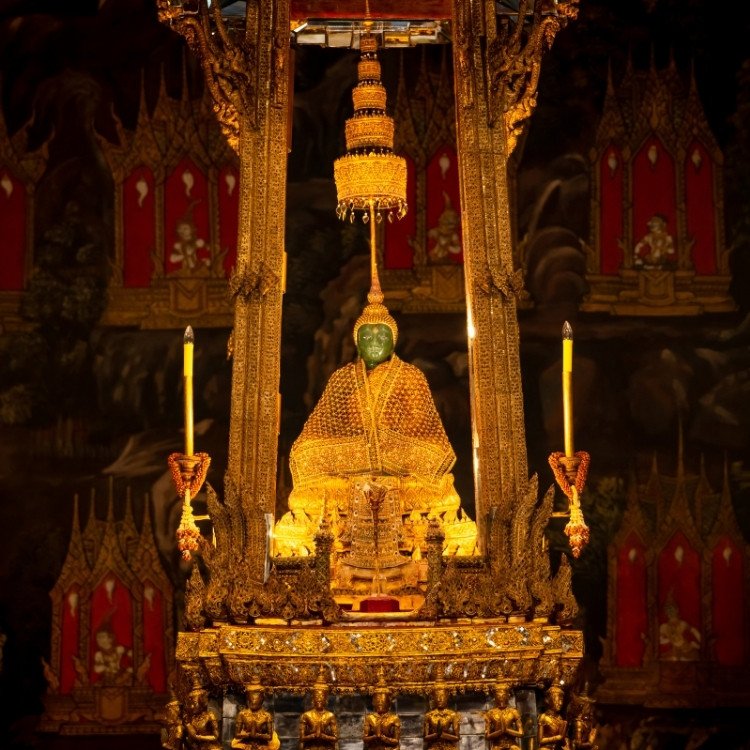
After the fall of Ayutthaya, King Taksin the Great established the new capital in Thonburi. Arriving at dawn, he encountered Wat Makok and renamed it Wat Chaeng (Temple of Dawn). This temple became a significant royal sanctuary and temporarily housed the sacred Emerald Buddha before it was relocated to Wat Phra Kaew.
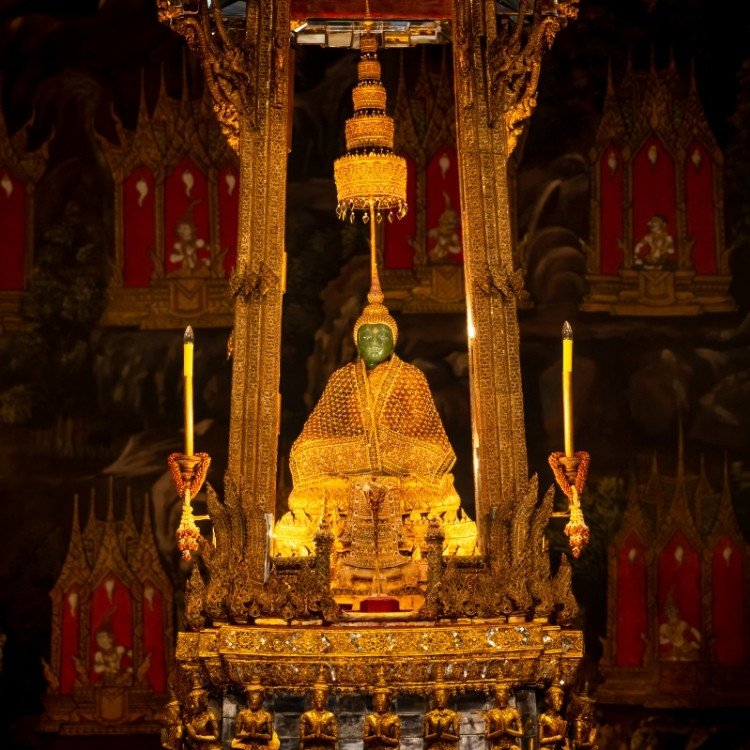
With the establishment of Bangkok as the capital by King Rama I, the importance of Wat Chaeng diminished slightly as the Emerald Buddha was moved. However, it remained a key religious site on the Thonburi side of the river.
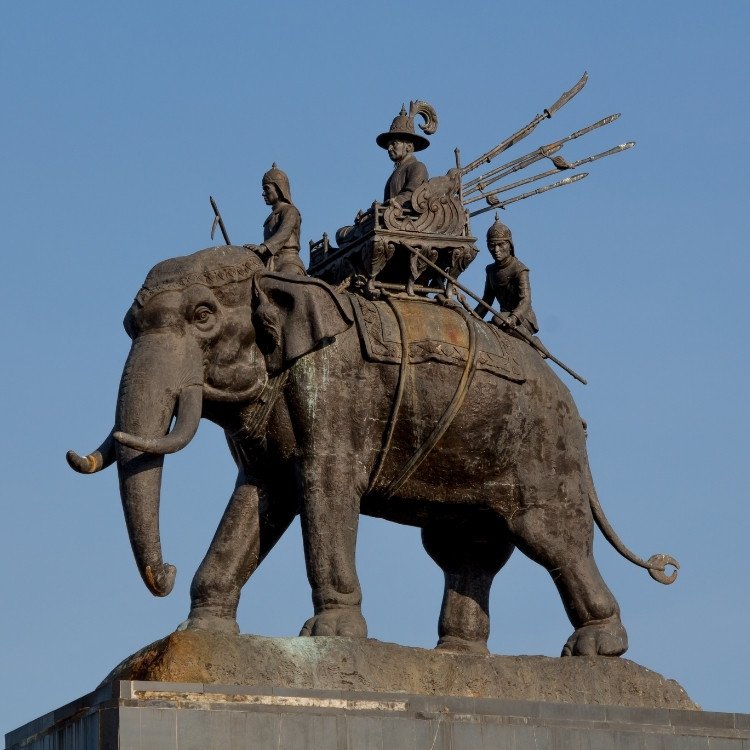
King Rama II began an ambitious restoration project, expanding the temple and initiating the construction of the central prang (tower), which symbolizes Mount Meru in Hindu-Buddhist cosmology. The temple was renamed Wat Arun Ratchawararam.
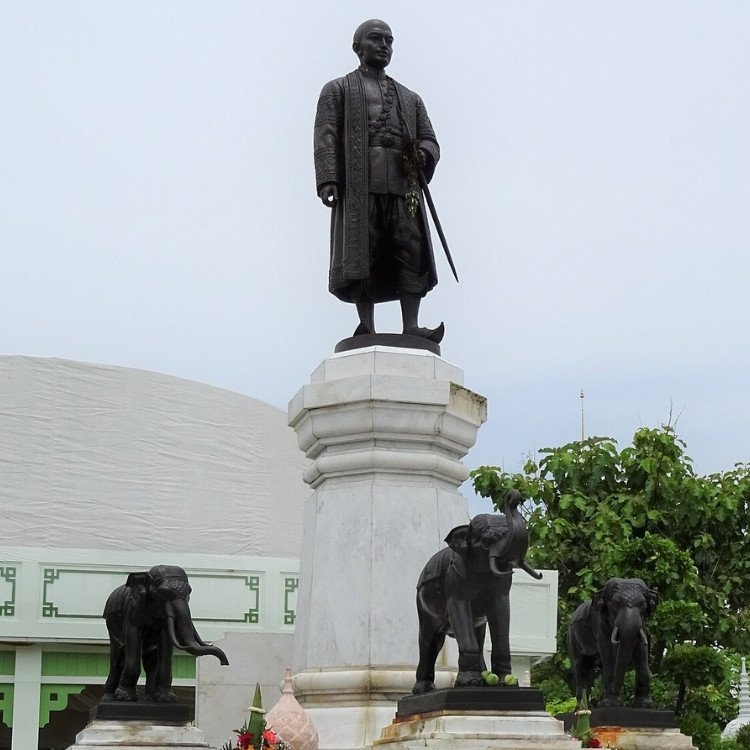
King Rama II began an ambitious restoration project, expanding the temple and initiating the construction of the central prang (tower), which symbolizes Mount Meru in Hindu-Buddhist cosmology. The temple was renamed Wat Arun Ratchawararam.

King Rama III completed the construction of the central prang, enhancing it with intricate porcelain mosaics and seashells that continue to sparkle under the sunlight. This marked the transformation of Wat Arun into the iconic temple it is today.
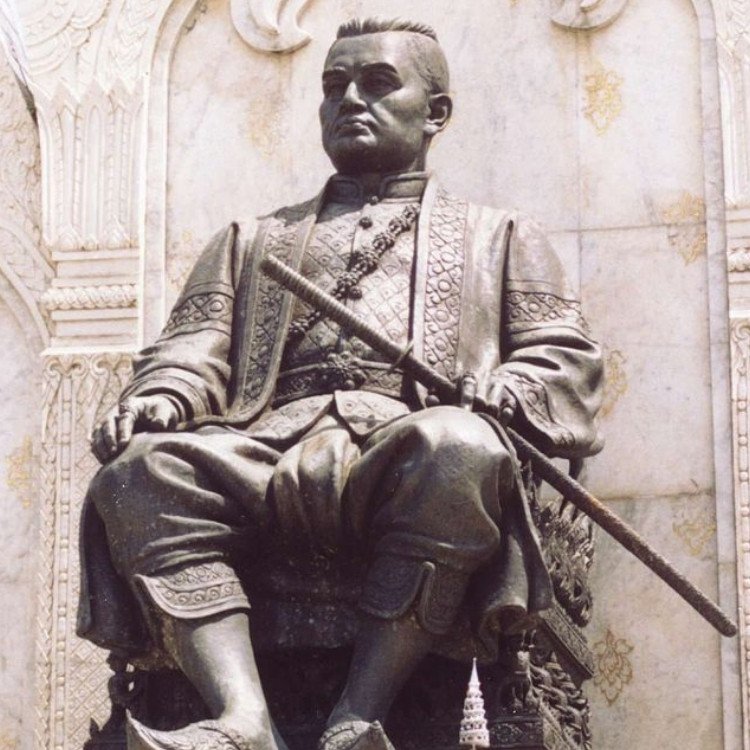
The temple’s prominence continued to grow, with additional prangs and structures added, further solidifying its importance as a religious and cultural symbol in Bangkok.
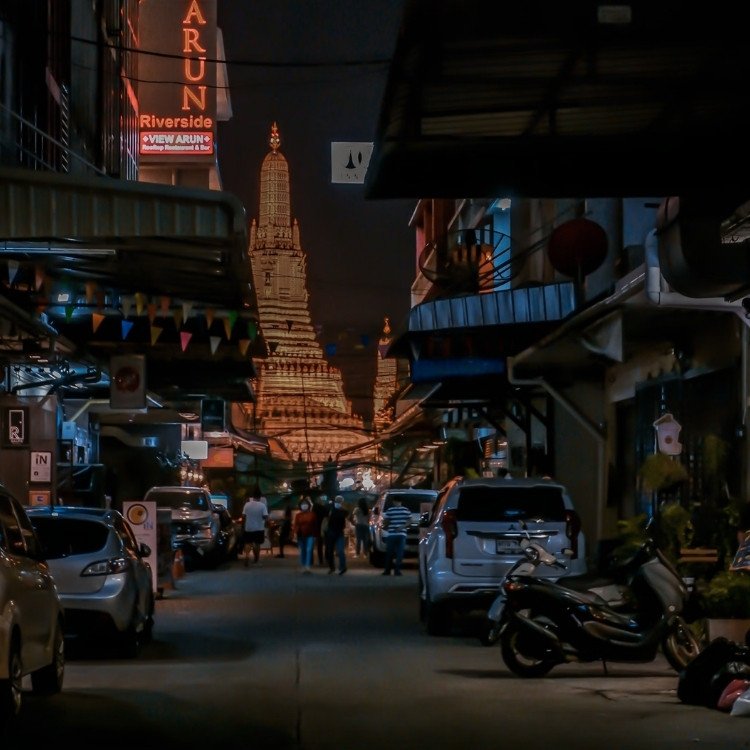
The temple’s prominence continued to grow, with additional prangs and structures added, further solidifying its importance as a religious and cultural symbol in Bangkok.

Wat Arun became a significant site for Buddhist ceremonies and royal events, reflecting its status as a center of spiritual life in Thailand.
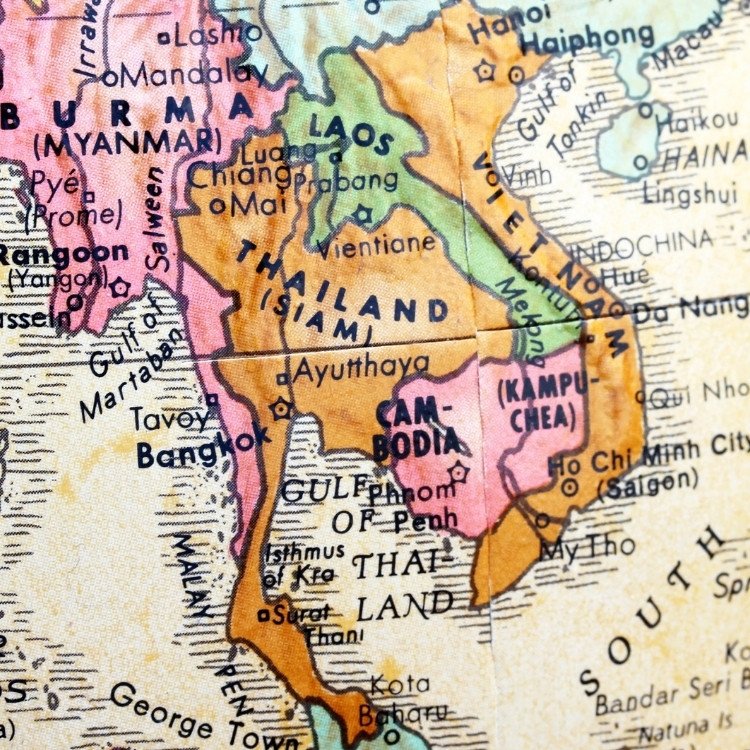
The temple underwent extensive restoration to repair and preserve its aging structures, including the central prang. Broken tiles were replaced, and the temple’s iconic mosaics were meticulously restored, ensuring that Wat Arun would continue to be a symbol of Bangkok’s heritage.
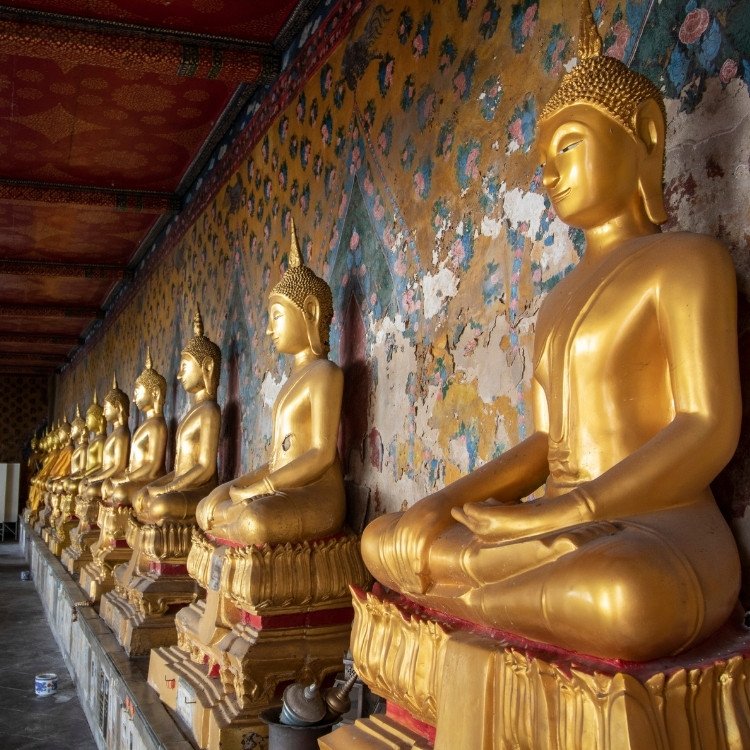
The temple underwent extensive restoration to repair and preserve its aging structures, including the central prang. Broken tiles were replaced, and the temple’s iconic mosaics were meticulously restored, ensuring that Wat Arun would continue to be a symbol of Bangkok’s heritage.

Wat Arun remains one of Bangkok’s most visited landmarks, admired for its stunning architecture and spiritual significance. The temple’s prangs continue to draw millions of visitors, who are captivated by its beauty at dawn and dusk.
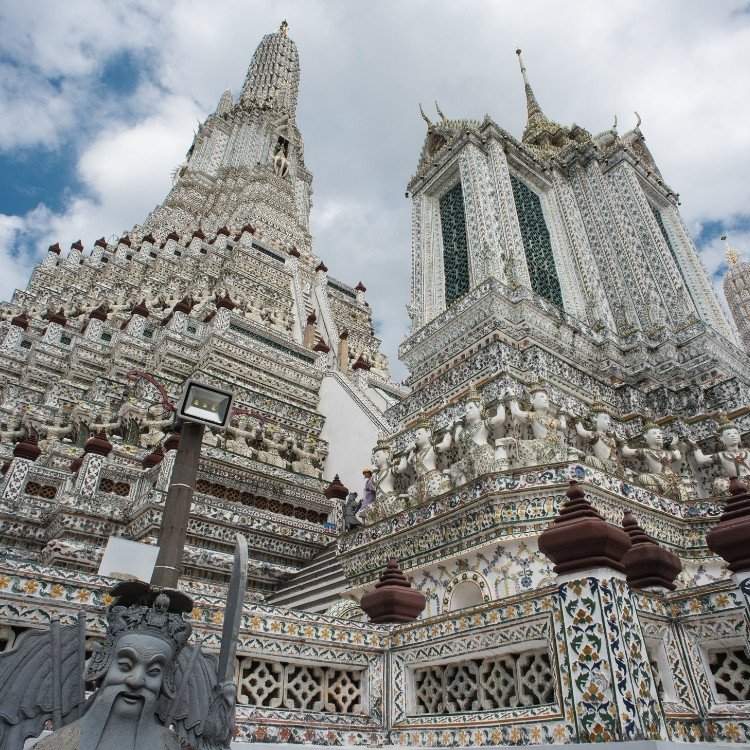
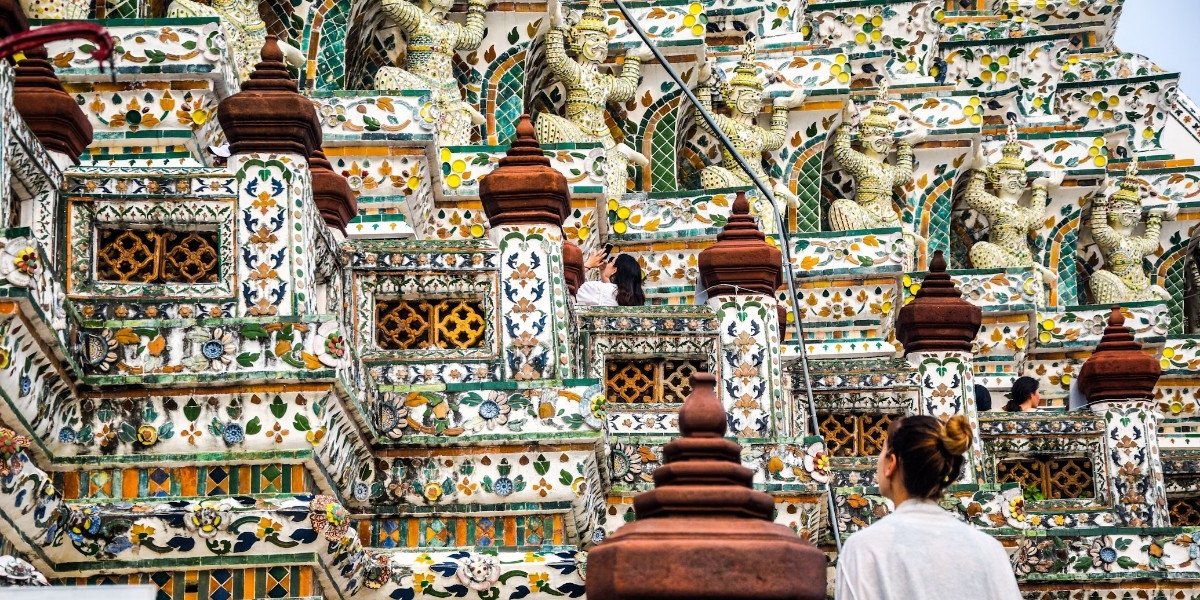
The story of Wat Arun, one of Bangkok’s most iconic landmarks, is woven with threads of resilience, spiritual devotion, and cultural evolution. Originally a humble temple known as Wat Makok during the Ayutthaya period, it sat quietly on the banks of the Chao Phraya River, a reflection of the early Thai community’s connection to both their environment and spiritual life.
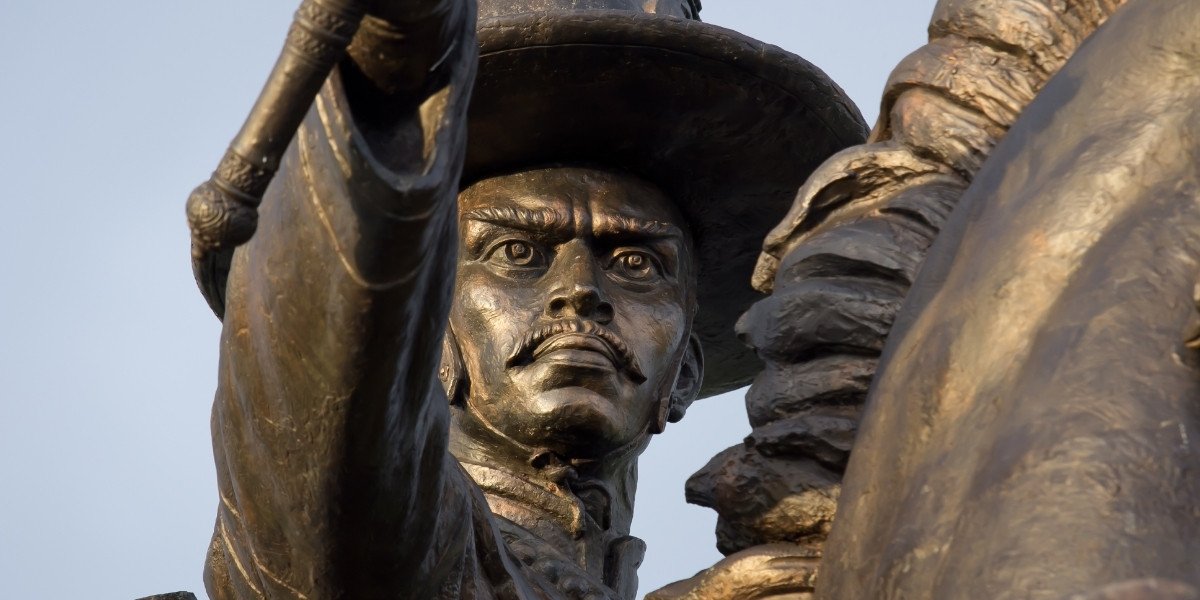
The temple’s transformation began in 1767 when King Taksin the Great, after leading the fight to free Siam from Burmese control, arrived at dawn at the site and was inspired to establish his new capital in Thonburi. Recognizing the temple’s spiritual significance, he renamed it Wat Chaeng, or the Temple of Dawn, marking it as a symbol of a new beginning for the Siamese people. The temple became a sanctuary, a place where the king sought divine protection and guidance as he worked to unify the country.
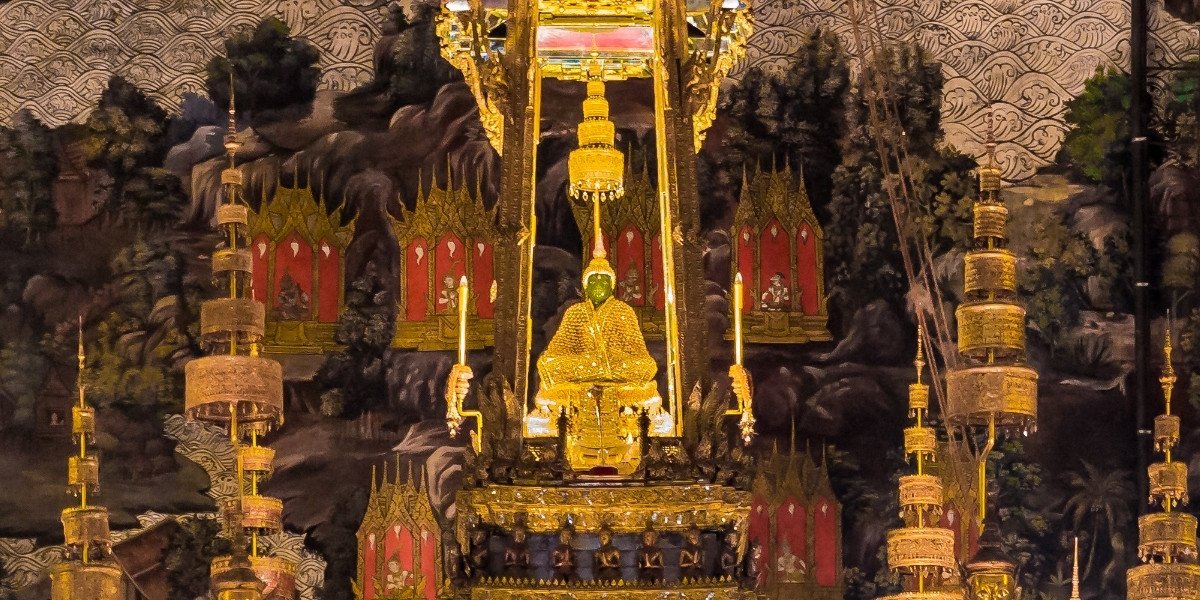
As the years passed, Wat Arun’s significance grew. Under King Rama I, the Emerald Buddha, Siam’s most sacred religious icon, was housed temporarily at the temple before being moved to the Grand Palace. This brief period solidified Wat Arun’s place in the spiritual and political heart of the nation.
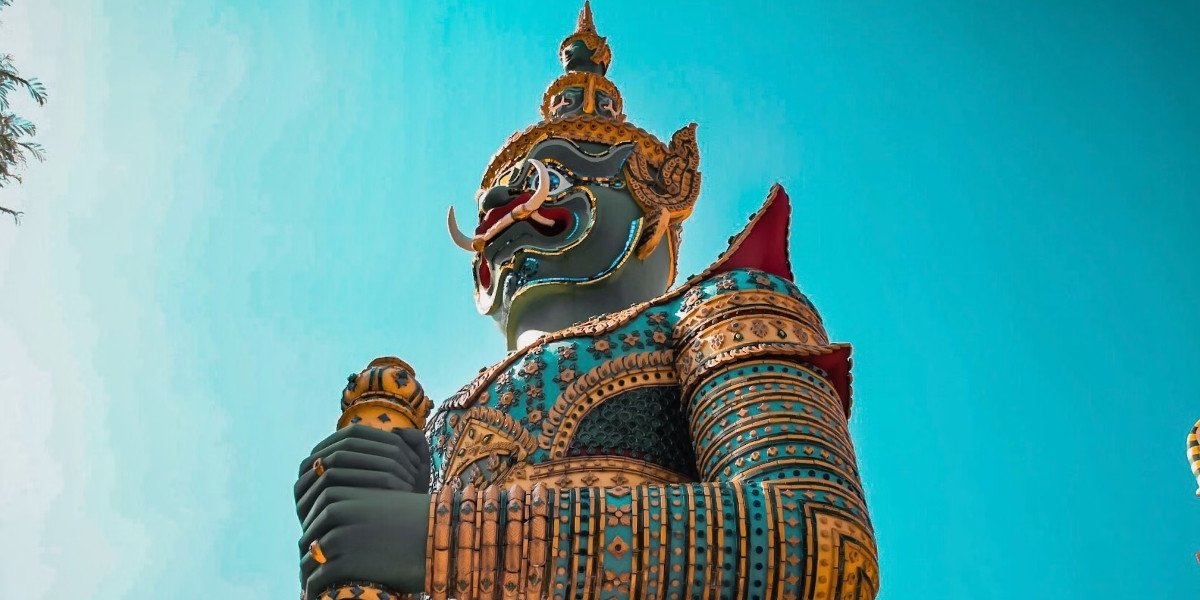
The most dramatic changes to Wat Arun came under the reigns of King Rama II and King Rama III in the early 19th century. Rama II initiated the construction of the central prang, a towering spire symbolizing Mount Meru, the center of the universe in Hindu and Buddhist cosmology. His vision was continued by Rama III, who adorned the prang with intricate designs made from porcelain and seashells, which were once used as ballast by trading Chinese junks. These decorations, which shimmer in the sunlight, reflect the temple’s connection to both the physical and spiritual worlds.
The temple’s architecture, with its Khmer-inspired prang and surrounding structures, represents a blend of religious symbolism and local craftsmanship. Each element of Wat Arun’s design—from the demons guarding the entrance to the depictions of cosmological hierarchy—speaks to the Thai people’s deep-rooted beliefs in the interplay between heaven and earth.
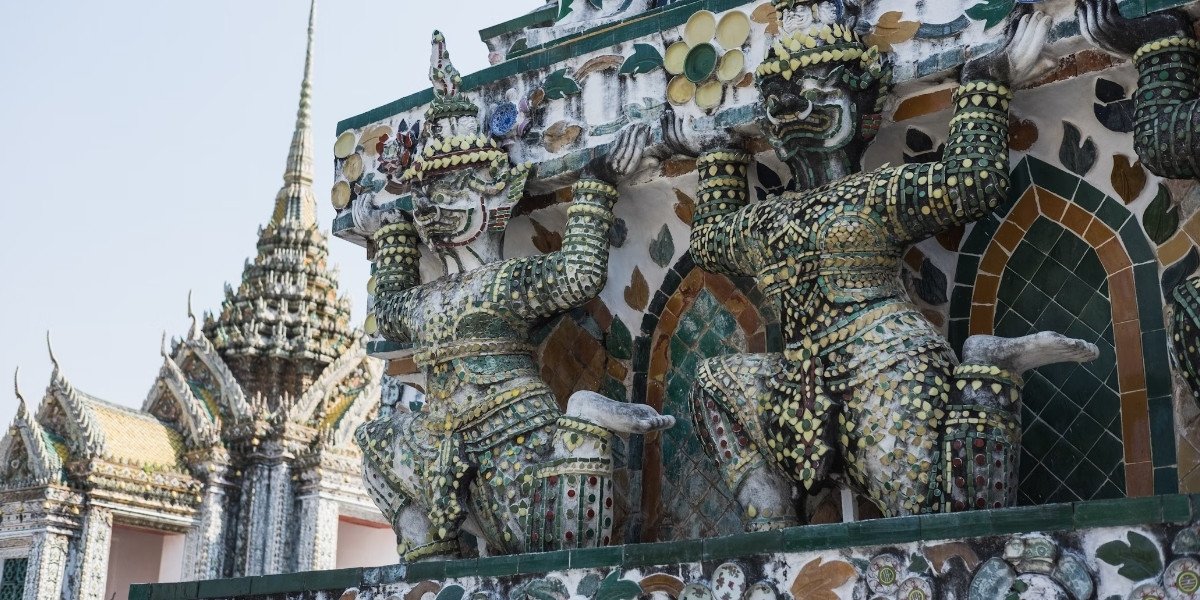
In more recent history, Wat Arun has undergone extensive restoration efforts to preserve its intricate beauty. The most significant of these restorations occurred between 2013 and 2017, ensuring that the temple remains a shining beacon of Thailand’s rich cultural heritage. These efforts included the replacement of damaged tiles and the reinforcement of the prang’s structure, allowing the temple to continue inspiring awe in those who visit.
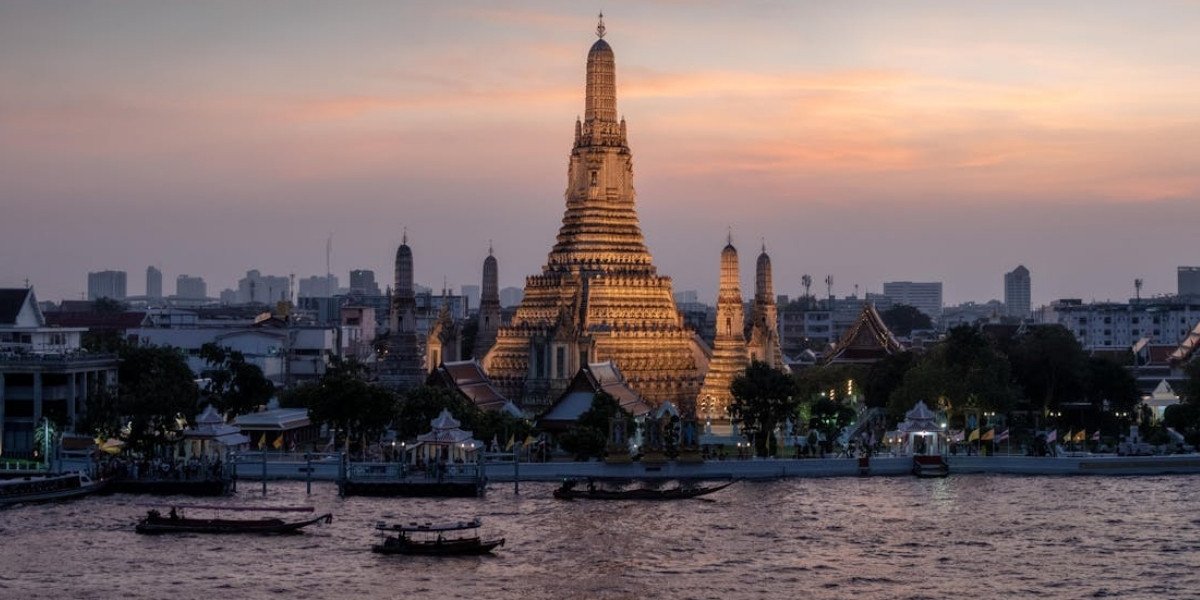
Today, Wat Arun stands not just as a historical monument but as a living sanctuary, a place where the spiritual and cultural heritage of Thailand is both preserved and celebrated. As the sun rises over Bangkok, the first rays of light illuminate the prang of Wat Arun, symbolizing hope, renewal, and the enduring spirit of the Thai people.
Contact Us
Copyright © 2025 Temples.org. All rights reserved.